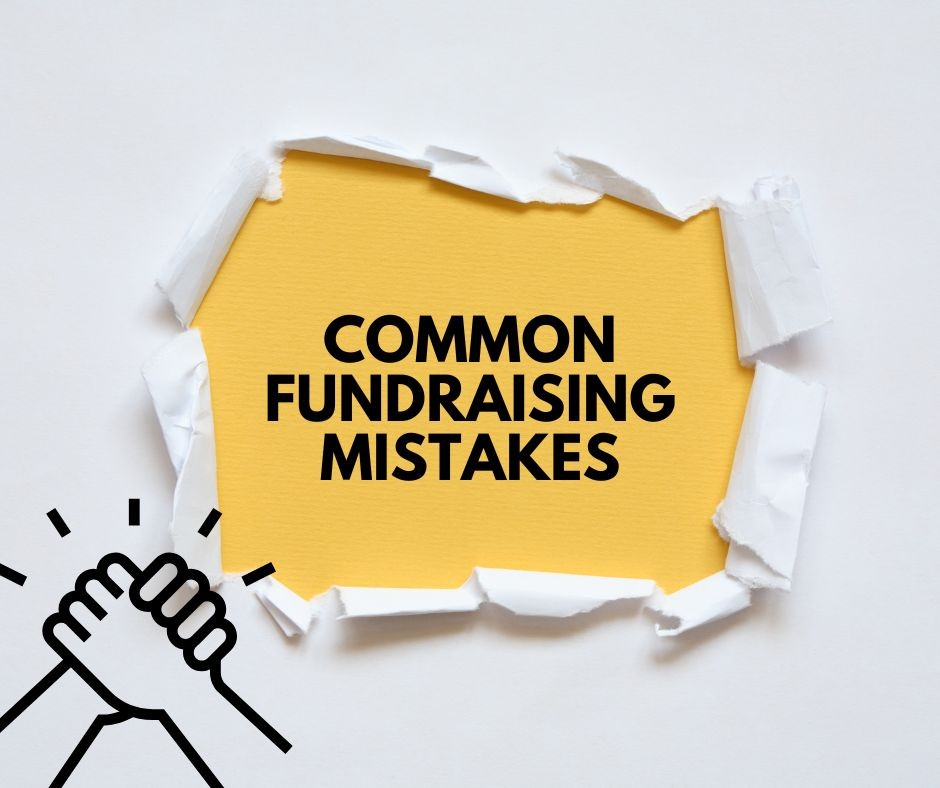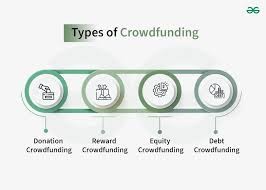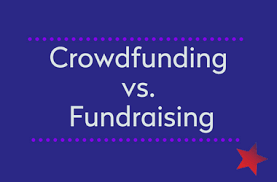Top 10 common fundraising mistakes and how to avoid them.
The introduction
Celebrity campaigns and large NGOs are no longer the only ways to raise money. Anyone may start fundraising using websites like gohelpme. online, GoFundMe, Kickstarter, and Indiegogo, whether for a dream business or medical expenses.
But merely creating a page and relying on donations? That will only lead to disappointment.
Starting appropriately is essential if you're trying to raise money for a project, cause, or personal need. Let's examine the top ten errors people make while launching their fundraising campaigns and how to avoid them.

mistake #1: Failure to Establish a Specific and Unambiguous Goal:
Would you contribute to a campaign that asks for assistance? Most likely not.
People are curious about:
- For what purpose are you raising funds?
- What is the amount that you require?
- What will be done with it?
Try saying, "I'm raising $3,000 to cover three months of rent and utilities while I recover from surgery," rather than, "I need help with bills."
Building trust and giving people a sense of purpose and measurement are two benefits of being specific.
mistake #2: Ignoring Your Story:
People are moved by stories, not by facts.
You must let prospective donors understand your predicament. Talk about your history, challenges, and aspirations. People will connect with you more if you are genuine and emotionally honest.
In addition to your words, incorporate images and videos. More than five paragraphs of text can be covered in a 60-second film in which you tell your tale.
Consider it this way: Your fundraiser revolves around your story. The campaign will fail if the heart isn't beating.
mistake #3: Starting Without a Plan
Would you launch a company without a strategy? I hope not.
Therefore, don't start your fundraiser without one. You must:
- Recognize your target market.
- Make a calendar of content.
- Choose a strategy for getting the word out.
- By launching strategically, you can avoid wasting time and effort shouting into thin air.
mistake #4: Not Establishing a Network First:
Your campaign may appear unreliable if it begins with zero likes and donations.
Before going public, contact your closest loved ones, friends, and supporters. Within the first 48 hours, ask them to share or donate.
Why? Because people like to donate to popular campaigns. Others are more likely to jump in if your fundraiser has early momentum.
mistake #5: Undervaluing the Influence of Images
A wall of text does not prompt action.
Utilise:
- Images showcasing the participants or cause
- Infographics that illustrate how money is spent
- Quick films that emphasize how urgent the situation is
- People are deterred from browsing and are inspired to donate by visually appealing content.
mistake #6: Neglecting Digital Channels and Social Media
Don't count on the platform to take care of everything.
You must be your campaign's primary marketer.
Utilise:
- Instagram and Facebook for heartfelt images and narratives
- Twitter for news and influencer outreach
- If you are a professional or entrepreneurial fundraiser, use LinkedIn.
- Use email to communicate directly with your key connections.
It is insufficient to post every few days simply. You must make a constant, multi-channel effort.
mistake #7: Neglecting to Make Campaign Updates
When it comes to fundraising, silence is lethal.
Post weekly updates even if nothing has changed in your condition, such as:
- Advancement toward the objective
- Expressions of appreciation
- Images or narratives from behind the scenes
This encourages recurring sharing and donations and keeps contributors engaged.
mistake #8: Ignoring Donor Engagement
People personally recall the feelings you evoked in them.
Remarking on their generosity or sending a brief note of gratitude goes a long way. Send them a personal email or include them in updates if you can.
Donors become devoted supporters as a result of that small gesture of gratitude.
mistake #9: Establishing an Impractical Schedule
Two days of advertising seems hurried. A six-month campaign goes on forever.
The sweet spot? 30 to 45 days.
This gives you adequate time to market while creating a sense of urgency. Ensure your timeline is linked to a specific event, such as a doctor's visit, a deadline at school, or an event.
mistake #10: Disregarding Platform Policies
Every platform for fundraising has guidelines.
Some prohibit raffles, competitions, or the financing of unlawful activity. Others impose fees that vary based on the method of withdrawal.
Go over the terms of service. If you break them, your campaign may be stopped or shut down completely.
Extra Advice for a Fundraising Success:
- Join Forces With Influencers
- A micro-influencer with 5,000 active followers can significantly increase the impact of your campaign.
- Make Use of Email Marketing
- Although it's sometimes disregarded, email is one of the most effective ways to connect with people who already know and trust you.
- Provide Rewards
- Give contributors a public shoutout, sticker, or digital thank-you letter. People feel special and acknowledged when they receive small tokens.
In conclusion
Starting a fundraiser involves more than just setting up a page; it also entails interacting with your community, establishing credibility, and sharing your story. Increase your campaign's likelihood of succeeding by avoiding these ten common blunders and implementing a well-thought-out plan.
Therefore, start strong, be true to yourself, and never stop sharing your story, whether you're raising money for a loved one, a personal need, or a cause near and dear to your heart.
FAQ
1. How can I pick the best platform for fundraising?
Consider your campaign's fees, usability, payout schedules, and kind (personal, business, or nonprofit). Kickstarter works well for creative projects, while GoFundMe is excellent for personal causes.
2. Can I hold more than one fundraiser?
Yes, but you'll need a new narrative or objective each time. Donor fatigue may result from rerunning the same campaign without any modifications.
3. When is the ideal season to start a campaign?
Due to the Christmas atmosphere, late November to early December is usually the best time; however, stay away from significant holidays when people are not online.
4. Should I give donors gifts or perks?
You can encourage donations with incentives if your platform permits them. Just make sure they don't break any rules or deplete your budget.
5. After the initial launch, how can I maintain momentum?
Post updates often, acknowledge accomplishments, share beneficiary stories, and keep up outreach via email and social media.








